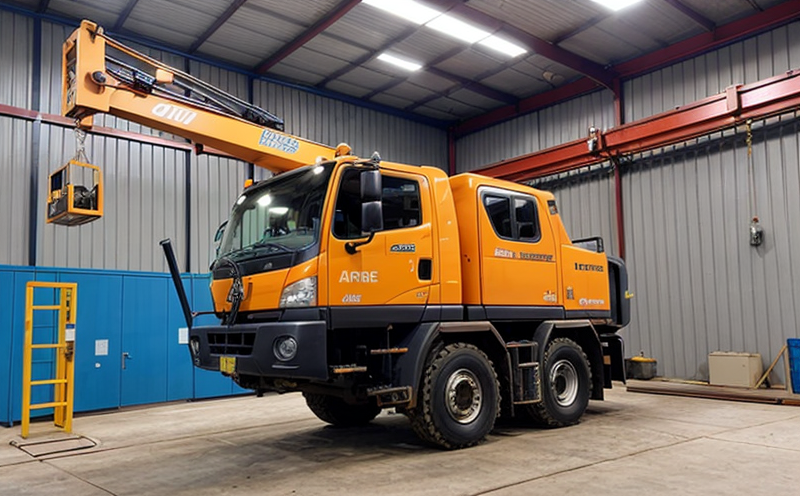Workshop crane inspection
In the realm of lifting equipment and cranes, workshop inspections are critical to ensuring that these vital machinery systems operate safely and efficiently. A workshop crane inspection involves a detailed examination of various components within a controlled environment, typically at the facility where the crane is based or during its maintenance intervals. This process ensures compliance with relevant international standards such as ISO 9433 and ASTM F2651.
The primary objective of a workshop crane inspection is to identify potential hazards that could lead to accidents or equipment failure. This includes checking the structural integrity, wear levels, and operational efficiency of the crane's components. The inspection can also encompass hydraulic systems, electrical wiring, brakes, and control panels. By conducting these inspections, quality managers and compliance officers can ensure their organization meets regulatory requirements and maintains a safe working environment.
The scope of a workshop crane inspection may vary depending on the specific type of crane involved, but it generally includes:
- Visual inspection of visible components
- Measurement of critical dimensions using precision tools
- Checking for signs of corrosion or fatigue in metal parts
- Testing hydraulic systems and electrical circuits with specialized equipment
- Evaluating the effectiveness of safety devices such as load limiters and emergency stop buttons
- Reviewing maintenance logs to assess past repairs and service intervals
This comprehensive approach allows for early detection of issues that could compromise crane performance or lead to costly downtime. It also helps in planning future maintenance schedules, thereby extending the operational life of the equipment.
In addition to ensuring compliance with regulatory standards, workshop inspections play a crucial role in enhancing workplace safety and reducing insurance premiums by identifying potential risks before they escalate into accidents. For R&D engineers involved in improving crane designs or procurement teams responsible for selecting reliable suppliers, these inspections provide valuable insights that can be leveraged to innovate and source high-quality equipment.
Benefits
The benefits of regular workshop crane inspections extend beyond mere compliance with regulatory requirements. By conducting these inspections, organizations can significantly enhance safety, reduce the risk of accidents, and minimize downtime caused by unexpected equipment failures. Regular maintenance schedules recommended through detailed inspection reports help in extending the operational life of cranes, thus providing better value for money spent on procurement.
Furthermore, compliance with international standards ensures that the crane meets quality benchmarks recognized globally. This not only facilitates smoother trade between countries but also builds trust among stakeholders and customers. For R&D engineers, these inspections offer a wealth of data that can be used to innovate and improve designs. They provide insights into real-world performance under various conditions, which is invaluable for product development.
From an insurance perspective, regular inspections help in reducing premiums by demonstrating due diligence towards safety measures. This proactive approach not only protects the organization financially but also fosters a culture of continuous improvement within the company. In summary, workshop crane inspections are essential for maintaining high standards of safety and efficiency while ensuring long-term sustainability.
Why Choose This Test
The decision to choose a workshop crane inspection is influenced by several factors that make it indispensable for organizations operating lifting equipment. Firstly, these inspections provide a detailed understanding of the current state of the crane, allowing quality managers and compliance officers to take informed decisions regarding maintenance and repair needs.
Secondly, by adhering to international standards such as ISO 9433 and ASTM F2651, organizations demonstrate their commitment to safety and reliability. This aligns with global best practices and enhances the reputation of the organization both locally and internationally.
The third reason for choosing a workshop crane inspection is the ability to prevent costly accidents and equipment failures. By identifying potential issues early on, these inspections help in reducing the frequency and severity of incidents that could otherwise lead to significant financial losses and reputational damage.
Lastly, compliance with local regulations and international standards ensures seamless operations across different jurisdictions. This is particularly important for organizations involved in cross-border trade or those operating in multiple countries where varying standards might apply. By standardizing practices through workshop inspections, these organizations can ensure consistent quality and safety across all locations.
International Acceptance and Recognition
- Workshop crane inspections conducted according to ISO 9433 are widely recognized in Europe and other parts of the world.
- ASTM F2651 standards are accepted globally, ensuring that inspections meet high-quality benchmarks.
- The International Organization for Standardization (ISO) and American Society for Testing and Materials (ASTM) certifications provide credibility and acceptance within international markets.
The acceptance of these inspection reports across different countries is facilitated by the consistent application of standards. This ensures that organizations can easily transfer their certified equipment between jurisdictions without encountering compliance issues.





